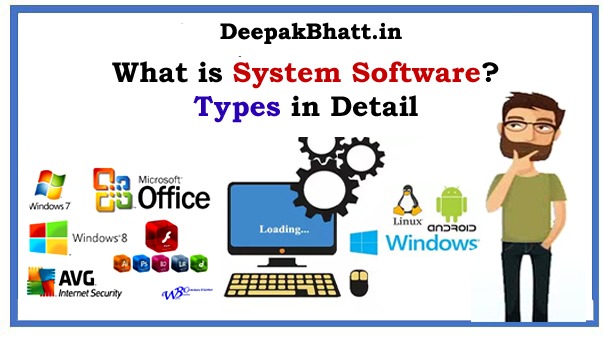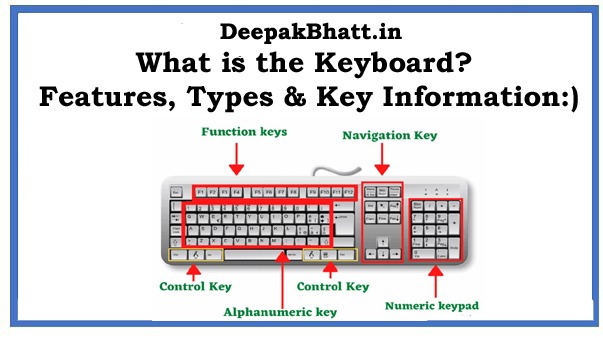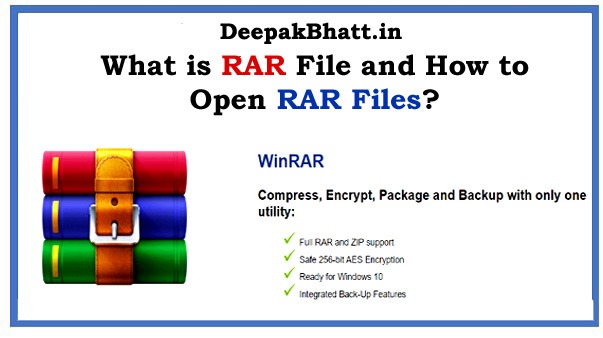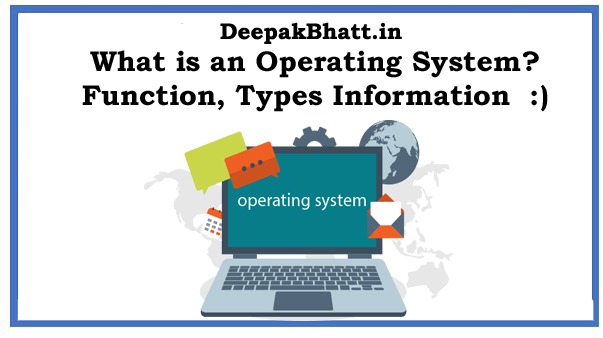What is System Software: Whenever it comes to Software. Then it is very important to know about system software.
But the thing now comes that even though we must have heard about it before.
But do you know? What is this System Software, and which is it? Also, what are its important features? If you do not know about all these topics then there is nothing to panic about.
Because today what I call system software for you guys, and what are its features. I have presented an article on this topic, which will be able to answer all your questions.
It is a type of computer program. Which is designed to run hardware and application programs. If you think that your computer system is a layered model. The system software is a kind of interface between hardware and user applications.
There is a very good example of System Software. operating system (OS). This OS manages all the programs on the computer. Many people call system software, only operating systems.
This is because this is what is running on the computer. Everything else is instructing it to perform a task.
That’s why today I thought that why not provide you people with complete information about system software definition so that you do not have any problem in understanding it in the coming time. Then without delay let’s start.
How to Create a Simple Business Plan
5 Books Will Make You a Better Entrepreneur
- 1 What is System Software?
- 1.1 Definition of system software
- 1.2 System Software Functions
- 1.3 Types of System Software
- 1.4 Systems software is categorized into five parts in the following way:
- 1.5 1. Operating System (OS)
- 1.6 2. Device Drivers
- 1.7 Devices that require drivers:
- 1.8 3. Firmware
- 1.9 4. Programming Language Translators
- 1.10 Assembler
- 1.11 Compiler
- 1.12 Interpreter
- 1.13 Utilities
What is System Software?
System Software refers to those files and programs. Which make up the operating system of the computer.
System files contain many things such as libraries of functions, system services, drivers for printers and other hardware, and system preferences, along with other configuration files. Whereas if we talk about those programs which are part of system software.
Then there are assemblers, compilers, file management tools, system utilities, and debuggers.
This system software is then installed on your computer.
When you install the Operating System. If you want, you can also update the software.
You just have to run some programs such as “Windows Update” for Windows or “Software Update” for Mac OS X.
Understand one thing like application programs, but the end-user cannot run system software. For example, even if you are using only a web browser throughout the day. In your computer, in such a situation, you would never have used the assembler program, meanwhile.
Since the system software is working at the very basic level of your computer, that’s why it is called “low-level” software. It generates the user interface and allows the operating system to interact with the hardware.
The programs that are in this software. They are written in low-level languages so that they can interact with hardware at a very basic level.
The best thing about this is that you do not have to worry about what the system software is. Since it is always running in the background. And we users are always working at a “high level”.
Some system software can be used directly by the users while other system software is working in the background. System software allows users. To interact directly with hardware functionality, such as Device Manager and other utilities that you can see in the Control Panel.
Definition of system software
System software is one such computer software. Which is used to control and coordinate computer hardware, and it provides an environment.
To execute the application software. If we talk about the examples of the system software, then it includes the operating system (OS), BIOS, device firmware, some system utility software that helps to configure, optimize, and maintain the computer, programming software such as assemblers, compilers, and debuggers, etc. System software serves as an interface. Between hardware and end-users.
System Software Functions
Although there are many features of System Software, let us know about some of their important features below.
- They are very close to the system.
- They are very fast if we talk about their speed then.
- It is very difficult to design them.
- At the same time, understanding them is equally difficult.
- These are very less interactive.
- What is System Software
- Their size is tiny.
- It is also very difficult to manipulate them.
- Often their programs are written in a low-level language.
Types of System Software
Do you know what is system software? If we broadly classify System Software then these are of 5 types. In which all are designed.
To control and coordinate the processes and functions of computer hardware. Also, they enable functional interaction as well. Between hardware, software, and user.
Systems software acts as a middleman. So that it should ensure that the communication between software and hardware is always correct and it should allow harmonious coexistence with the user.
Systems software is categorized into five parts in the following way:
Operating System: It controls all types of communication. Which is between hardware, system programs, and other applications.
Device Driver: Enables device communication between the OS and other programs.
Firmware: This enables device control and identification.
Translator: It translates. Convert high-level languages into low-level machine codes.
Utility: It ensures this. To have optimum functionality between devices and applications.
1. Operating System (OS)
The operating system is one such type of system software kernel. Which forms a medium between the computer hardware and the end user. to interact.
This is first installed on the computer. So that it allows devices and applications to be identified and after that make them functional.
System software is the first layer of software. Which is loaded into the memory. Whenever the computer is powered up. Examples are Microsoft Windows, Linux, and Mac OS.
2. Device Drivers
Driver software is one such type of system software. Which helps to keep computer devices and their peripherals alive.
All connected components and external add-ons can perform their intended tasks only with the help of drivers. As they are directed by the OS. Without drivers, the OS can assign any duties to anyone.
Devices that require drivers:
3. Firmware
Firmware is one such operational software. Which is embedded. In a flash, ROM, or EPROM memory chip so that the OS can easily identify them. It can directly manage and control all the activities of any single hardware.
In earlier times, firmware used to mean fixed software. As the word used in it shows firm. They used to be installed earlier.
non-volatile chips and can only be upgraded if they are swapped with new preprogrammed chips. This was done to differentiate it from high-level software.
Which were updated without swapping any components. But current firmware is stored in flash chips, and they can now be upgraded without swapping semiconductor chips.
4. Programming Language Translators
These are the intermediate programs on which most software programmers depend. To translate high-level language source code into machine language code.
In this, they are called high-level language. Which are a collection of programming languages that can be easily understood by humans, and can also be coded (such as Java, C++, Python, PHP, BASIC, etc.). machine language is a type of complex code that only the processor can understand.
These codes are converted into machine language. So that the computer can understand this easily and work accordingly. This operation is done by the language processor, and it also has three components:-
Assembler
This language processor is used to convert assembly language into machine-level language.
Compiler
This language processor is used to convert high-level language into machine-level language, at the same time, its execution time is very fast. Error detection in the compiler is very difficult. Programming languages such as C, C ++, and Scala use the compiler.
Interpreter
This language processor is used to convert high-level language to machine-level language. That too is in a line-by-line manner, so its execution time is very slow.
Error detection is very easy in this because it only reports the bug in it. As soon as it is detected restart the process again. It consumes unnecessary memory. Programming languages such as Python, Ruby, and Java use the interpreter.
Utilities
That system software is called utilities. Which comes between the system and the application software. These are programs that are only for diagnostic and maintenance tasks of the computer.
They are very handy and they ensure this. That the computer should function optimally. His tasks vary. From crucial data security to disk drive defragmentation.
Most are third-party tools and they often come bundled. with the operating system. These third-party tools are available. They are also individually or bundled together such as Hiren Boot CD, Ultimate Boot CD, or Kaspersky Rescue Disk.
You May Also Like:
What is an Input Device with Complete Definition

















